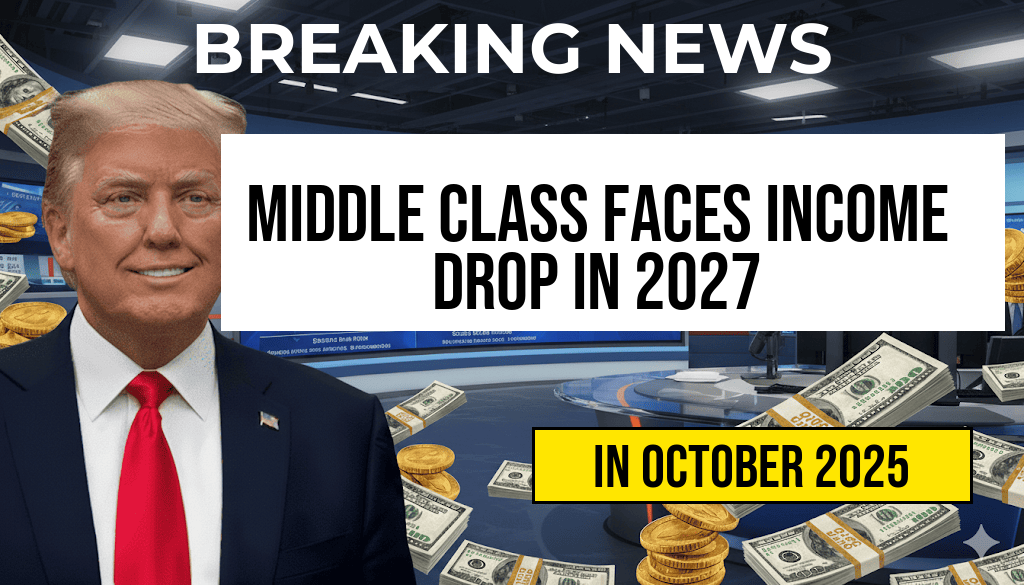The middle class in the United States faces a significant financial upheaval as recent policy proposals threaten to reduce average household incomes by approximately $1,300 in 2027. Experts warn that upcoming legislative changes, coupled with shifts in tax regulations and social benefits, could disproportionately impact middle-income earners, eroding decades of economic stability. While policymakers argue these measures aim to address broader fiscal challenges, critics contend they could deepen income inequality and strain household budgets across the country.
The Proposed Policies and Their Potential Impact
Tax Reforms and Revenue Measures
Federal lawmakers are currently debating a series of tax reforms that could reshape the income landscape. The proposed adjustments include increasing capital gains taxes, tightening deductions for middle-income families, and introducing new levies on certain industries. According to analyses from the Investopedia, such measures could result in an average loss of $1,300 per household by 2027, a figure derived from modeling national income distributions and tax liability shifts.
Social Benefits and Public Spending Cuts
In addition to tax hikes, potential cuts to social programs—such as housing subsidies, healthcare assistance, and education grants—are under consideration. These reductions could disproportionately affect middle-class families who rely on these supports to maintain their standard of living. An analysis by the Wikipedia page on public spending highlights how such adjustments could diminish disposable income and increase financial vulnerability.
Economic Context and Historical Precedents
Shift in Income Distribution
| Year | Average Household Income | Projected Change |
|---|---|---|
| 2023 | $78,000 | — |
| 2027 (Projected) | $76,700 | – $1,300 |
This anticipated reduction echoes historical trends where policy shifts have led to income stagnation or decline among middle-income brackets. Data from the Bureau of Labor Statistics indicates that similar policy adjustments in previous decades contributed to widening income gaps and reduced economic mobility for many American families.
Potential for Increased Economic Inequality
“These policy proposals risk amplifying income disparities,” says Dr. Laura Chen, an economist at the Urban Institute. “When middle-income households face tax increases and benefit cuts simultaneously, their purchasing power diminishes, which can slow economic growth and strain local economies.” Such developments could dampen consumer spending—a key driver of national economic health—and exacerbate social divisions.
Public Response and Political Dynamics
Middle-Class Concerns
Community leaders and advocacy groups are voicing alarm over the potential financial squeeze. The Consumer Reports organization highlights that even modest income reductions can force families to cut back on essentials, delay savings, or incur debt. “Middle-class families are already stretched thin; additional financial burdens threaten to push many below the poverty line,” states spokesperson Maria Lopez.
Policy Debate and Outlook
Lawmakers remain divided. Supporters argue that increased revenue from higher taxes on wealthier individuals and corporations is necessary to fund infrastructure, healthcare, and education reforms. Conversely, opponents warn that these policies could hinder economic growth and job creation, especially if consumer spending declines. Political analysts suggest that the outcome of this debate could reshape the economic landscape well into the next decade.
Broader Implications for the American Economy
Potential Effects on Consumer Spending
Reduced disposable income among the middle class can have ripple effects across various sectors, including retail, real estate, and services. If households tighten budgets, businesses may experience decreased revenue, leading to possible layoffs or slowed hiring. The Forbes business magazine notes that consumer expenditure accounts for roughly two-thirds of U.S. economic activity, emphasizing the importance of maintaining household incomes.
Long-Term Economic Stability
Many economists warn that sustained declines in middle-class income could undermine long-term economic stability. A shrinking middle class often correlates with reduced savings rates, lower investments, and increased reliance on social safety nets. Policymakers face the challenge of balancing fiscal responsibility with the need to sustain a thriving, equitable economy.
Frequently Asked Questions
What is the main concern expressed in the article?
The article highlights that new policies could significantly impact the middle class by reducing the average income by approximately $1,300 in 2027.
Which policies are expected to affect the middle class?
The policies under consideration involve tax reforms and welfare adjustments that could decrease disposable income for middle-income households starting in 2027.
How might these policy changes impact middle-class families?
These changes could lead to a reduction in purchasing power, affecting household budgets, savings, and overall financial stability for middle-income families.
Are there any measures proposed to mitigate the income reduction?
The article discusses potential policy adjustments and economic strategies that could help counteract the income decline, but no definitive solutions are currently in place.
What is the significance of this forecast for the overall economy?
The projected income decrease for the middle class could have broad implications, potentially slowing economic growth and affecting consumer spending in the coming years.






